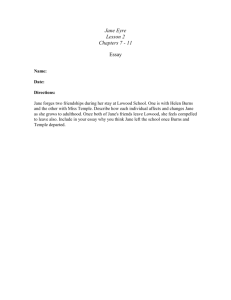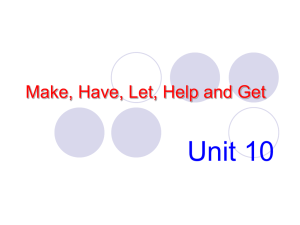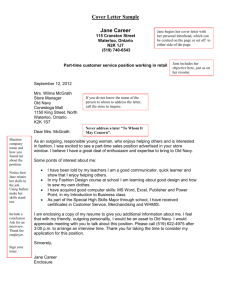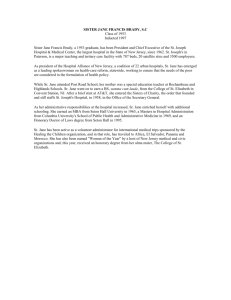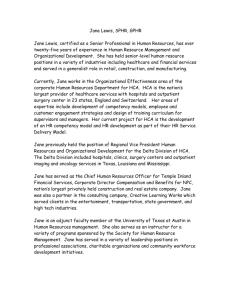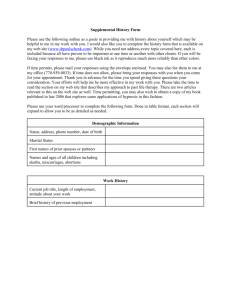Psychology Concept Check: Abnormality & Treatment
advertisement
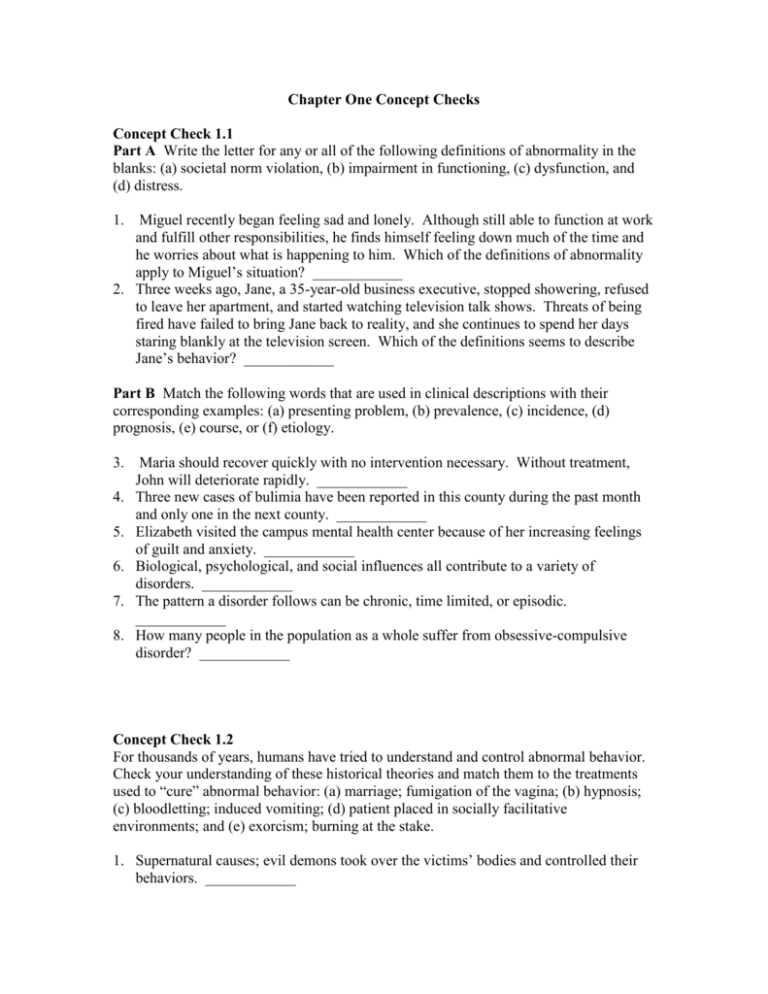
Chapter One Concept Checks Concept Check 1.1 Part A Write the letter for any or all of the following definitions of abnormality in the blanks: (a) societal norm violation, (b) impairment in functioning, (c) dysfunction, and (d) distress. 1. Miguel recently began feeling sad and lonely. Although still able to function at work and fulfill other responsibilities, he finds himself feeling down much of the time and he worries about what is happening to him. Which of the definitions of abnormality apply to Miguel’s situation? ____________ 2. Three weeks ago, Jane, a 35-year-old business executive, stopped showering, refused to leave her apartment, and started watching television talk shows. Threats of being fired have failed to bring Jane back to reality, and she continues to spend her days staring blankly at the television screen. Which of the definitions seems to describe Jane’s behavior? ____________ Part B Match the following words that are used in clinical descriptions with their corresponding examples: (a) presenting problem, (b) prevalence, (c) incidence, (d) prognosis, (e) course, or (f) etiology. 3. Maria should recover quickly with no intervention necessary. Without treatment, John will deteriorate rapidly. ____________ 4. Three new cases of bulimia have been reported in this county during the past month and only one in the next county. ____________ 5. Elizabeth visited the campus mental health center because of her increasing feelings of guilt and anxiety. ____________ 6. Biological, psychological, and social influences all contribute to a variety of disorders. ____________ 7. The pattern a disorder follows can be chronic, time limited, or episodic. ____________ 8. How many people in the population as a whole suffer from obsessive-compulsive disorder? ____________ Concept Check 1.2 For thousands of years, humans have tried to understand and control abnormal behavior. Check your understanding of these historical theories and match them to the treatments used to “cure” abnormal behavior: (a) marriage; fumigation of the vagina; (b) hypnosis; (c) bloodletting; induced vomiting; (d) patient placed in socially facilitative environments; and (e) exorcism; burning at the stake. 1. Supernatural causes; evil demons took over the victims’ bodies and controlled their behaviors. ____________ 2. The humoral theory reflected the belief that normal functioning of the brain required a balance of four bodily fluids or humors. ____________ 3. Maladaptive behavior was caused by poor social and cultural influences within the environment. ____________ Concept Check 1.3 Match the treatment with the corresponding psychological theory of behavior: (a) behavioral model, (b) moral therapy, (c) psychoanalytic theory, (d) humanistic theory 1. Treat institutionalized patients as normally as possible and encourage social interaction and relationship development. ____________ 2. Hypnosis, psychoanalysis like free association and dream analysis, and balance of the id, ego, and superego. ____________ 3. Person-centered therapy with unconditional positive regard. ____________ 4. Classical conditioning, systematic desensitization, operant conditioning. ____________ Answers to Concept Checks 1.1 Part A 1. d 2. b,c Part B 3. d 4. c 5. a 1.2 1. e 2. c 3. d 1.3 1. b 2. c 3. d 6. f 4. a 7. e 8. b


